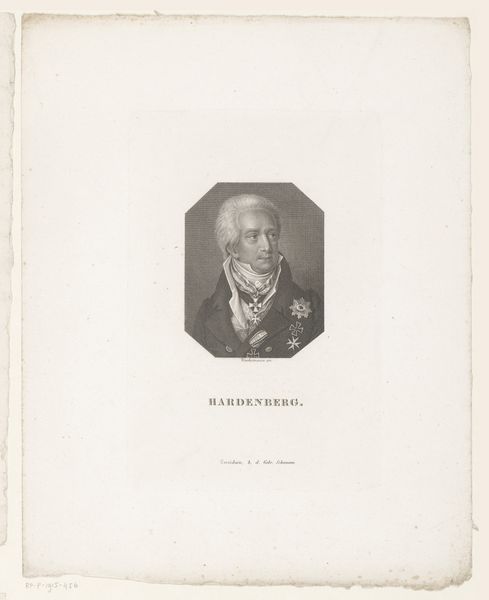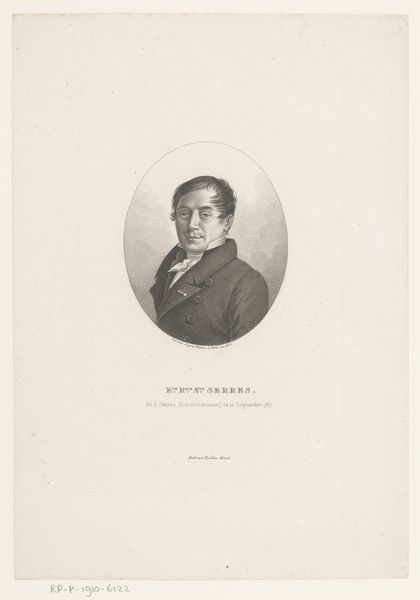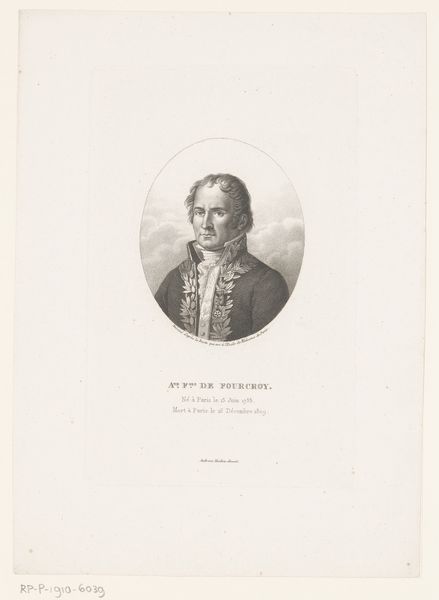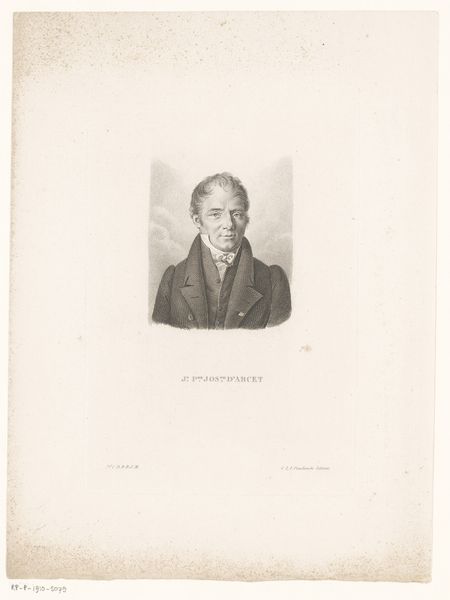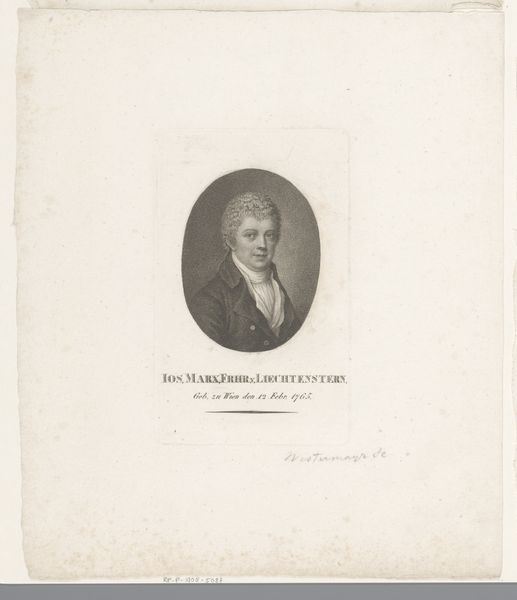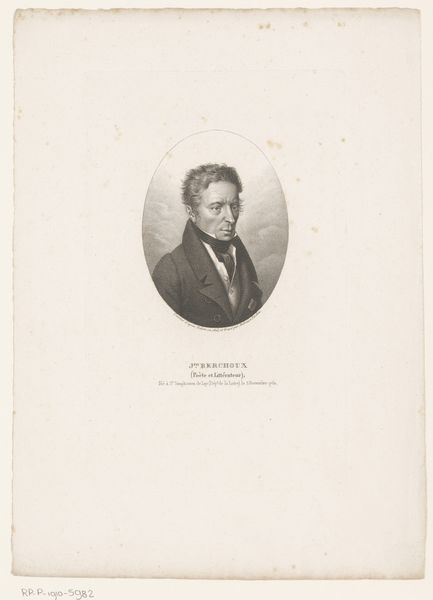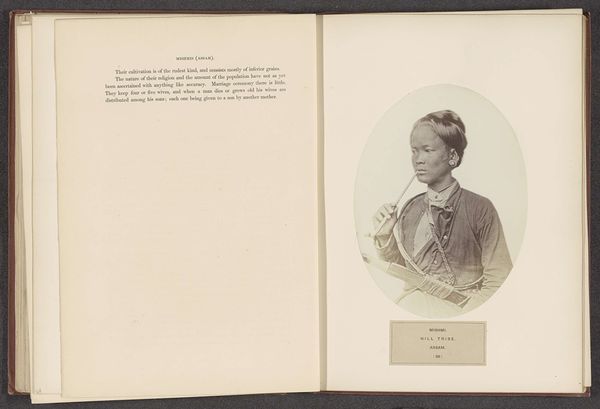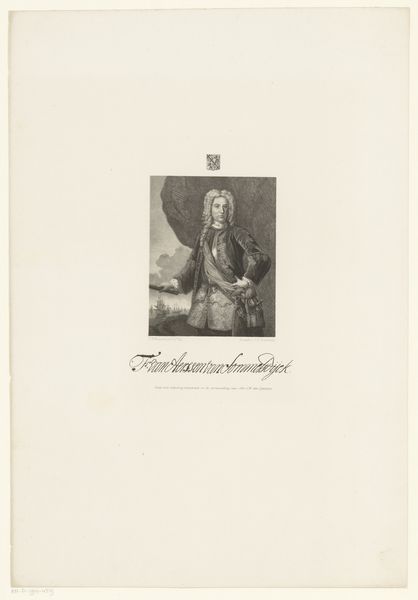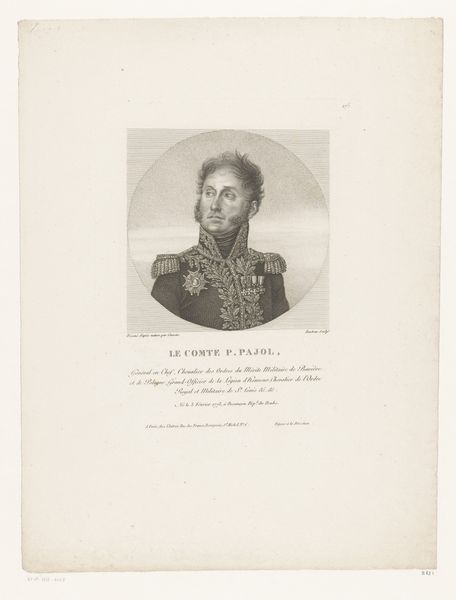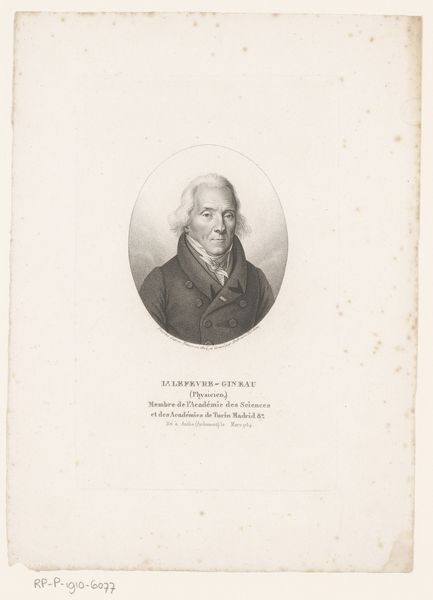
engraving
#
portrait
#
neoclacissism
#
old engraving style
#
history-painting
#
tonal art
#
academic-art
#
engraving
#
realism
Dimensions: height 234 mm, width 149 mm
Copyright: Rijks Museum: Open Domain
Curator: Ambroise Tardieu's "Portret van Guillaume-Antoine Olivier," likely completed between 1820 and 1828, presents a compelling subject through the meticulous medium of engraving. Editor: It strikes me immediately as rather stoic. There’s a clear emphasis on linearity, from the rigid oval frame to the subject's severe gaze. The tonal gradations, however subtle, provide a remarkable depth considering the medium. Curator: Indeed. Tardieu uses line and the calculated application of shadow to construct volume and texture. Observe the intricate details of Olivier's collar, where the delicate curves play against the stark, almost mathematical rendering of his face. It aligns perfectly with Neoclassical principles, don't you think? Editor: Absolutely. The oval composition certainly invokes classical cameos. But I find myself more intrigued by Olivier himself, who is identified in the inscription as both "Voyageur et Entomologiste". The meticulous detail, particularly around his coat's braiding, could allude to the precise observation central to the study of insects. He is memorialized with his work it seems. Curator: It's an astute point. The choice of engraving itself, with its capacity for immense detail, might echo the entomologist's own dedication to close observation and scientific cataloging. Also, let’s acknowledge how Neoclassicism often looked to history as a framework for legitimizing revolutionary order. By creating heroes for study the new government aligned itself to Rome. Editor: That connection to the heroic archetype is definitely reinforced by the backdrop – those softly rendered clouds beyond the oval subtly suggest an almost celestial glory conferred upon him, in addition to the classical form of a coin. Curator: Exactly! The visual vocabulary positions Olivier not merely as an individual but as a figure worthy of emulation. Even the minimal embellishments are purposefully orchestrated to construct an image of intellectual and moral authority. Editor: Seeing it laid out so precisely, really amplifies that notion of inherited glory being co-opted through this form. So different than the Baroque impulse. Thank you. Curator: And for me, it's an affirmation of how close observation reveals an interplay of line, form, and historical reference that resonates even centuries later.
Comments
No comments
Be the first to comment and join the conversation on the ultimate creative platform.
